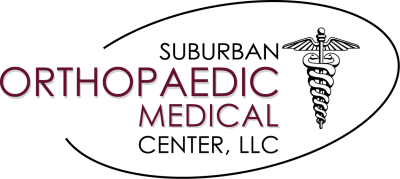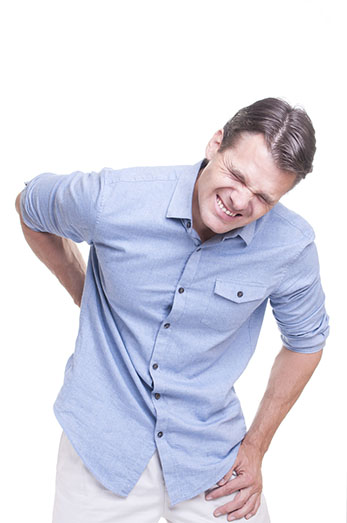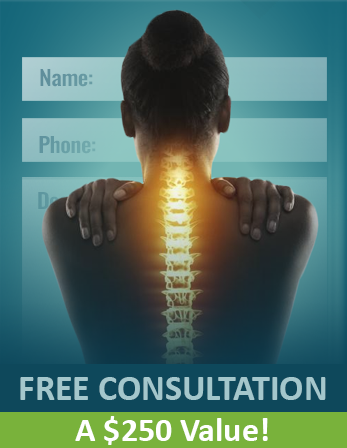BACK, NECK, & SHOULDER INJURIES
- Home
- /
- Conditions
INJURIES / CONDITIONS
BACK PAIN – INFORMATION FOR PATIENTS THROUGHOUT THE NEWARK, NJ AREA
The lower back, or lumbar area, is an incredible structure of interconnecting bones, joints, nerves, ligaments, and muscles that work together to provide support, strength, and flexibility. However, this complex structure also leaves the lower back susceptible to injury and pain.
Back pain can make everyday life difficult and unpleasant. Over time, back pain can even reduce your quality of life and lead to pain further up the spine. At Suburban Orthopaedic Medical Center, in Newark NJ, we offer a wide range of treatments that help patients manage their back pain, heal from their back injuries and improve their quality of life. Understanding the causes of back pain can help enable you to get the treatment you need.

Suburban Orthopaedic Medical Center is a world class leader in the diagnosis and treatment of musculoskeletal conditions. We offer multi-disciplinary spine care, including non-surgical back & spine treatment and state-of-the-art back & spine surgical services. We’re here to help you understand your back pain and provide treatment options that will help relieve your pain. An information partnership between physician and patient is the foundation we build with you to achieve the best medical results.
Causes of Back Pain
Back pain can be caused by a variety of factors, injuries and chronic conditions. Below are some of the most common causes of back pain:
> Herniated disc – A herniated disc is a damaged disc found between the vertebrae in the spine.
> Poor lifting techniques – Poor lifting techniques can lead to strain the muscles and joints in the back, causing low back pain and pain elsewhere in the body.
> Ergonomic problems – Ergonomic problems caused by poorly designed chairs or beds can lead to muscle strain and chronic pain.
> Sciatica – Pain of the sciatic nerve occurs when the nerve becomes pinched in the lower lumbar of the spine.
> Sports injury – Sports injury can damage the soft tissues in the body, leading to muscle aches and other pain.
> Personal injury – Personal injuries like slips and falls can lead to pain in the back and other parts of the body.
Symptoms & Conditions We Treat
Our specialists help patients find relief from the following symptoms and conditions:
> Acute, chronic neck pain and back pain
> Herniated Disc, Sciatica, and Radiculopathy
> Spinal stenosis
> Myelopathy
> Degenerative conditions of the adult spine
> Scoliosis
Non-Surgical Treatments
Our specialists view surgery as a treatment option only when all other avenues have been explored.
Some of our non-surgical treatments include:
> Physical therapy
> Injections
> Decompression
> Pain management
Surgical Treatments
If our specialists determine that surgery is your best option, they will treat you using cutting-edge surgical techniques to ensure safe, fast, and effective recovery.
Suburban provides the following procedures:
> ALIF: Anterior Lumbar Interbody Fusion
> Anterior Cervical Discectomy & Fusion
> Interspinous Process Decompression
> Intraoperative Monitoring (IOM) of the Nerves
> Kyphoplasty
> Laminectomy
> Lumbar Disc Microsurgery
> Lumbar Interbody Fusion
> Spinal Cord Stimulator Implant
> Spinal Fusion
NECK INJURIES – INFORMATION FOR PATIENTS THROUGHOUT THE NEWARK, NJ AREA
The neck (cervical spine) is composed of vertebrae that begin in the upper torso and end at the base of the skull. The bony vertebrae along with the ligaments (which are comparable to thick rubber bands) provide stability to the spine. The muscles allow for support and motion. The neck has a significant amount of motion and supports the weight of the head. However, because it is less protected than the rest of the spine, the neck can be vulnerable to injury and disorders that produce pain and restrict motion.

Because the neck is so flexible and because it supports the head, it is extremely vulnerable to injury. Motor vehicle or diving accidents, contact sports, and falls may result in neck injury. The regular use of safety belts in motor vehicles can help to prevent or minimize neck injury. A “rear end” automobile collision may result in hyperextension, a backward motion of the neck beyond normal limits, or hyperflexion, a forward motion of the neck beyond normal limits. The most common neck injuries involve the soft tissues: the muscles and ligaments. Severe neck injuries with a fracture or dislocation of the neck may damage the spinal cord and cause paralysis.
The bones in the neck
The seven bones in the neck are the cervical vertebrae. They support the head and connect it to the shoulders and body. A fracture, or break, in one of the cervical vertebrae is commonly called a broken neck. Cervical fractures usually result from high-energy trauma, such as automobile crashes or falls.
Any injury to the vertebrae can have serious consequences because the spinal cord, the central nervous system’s connection between the brain and the body, runs through the center of the vertebrae. Damage to the spinal cord can result in paralysis or death. Injury to the spinal cord at the level of the cervical spine can lead to temporary or permanent paralysis of the entire body from the neck down.

Neck sprains and strains are the most frequently reported injuries in US insurance claims. In 2007, an estimated 66 percent of all insurance claimants under bodily injury liability coverage and 57 percent under personal injury protection coverage — two important insurance injury coverages — reported minor neck injuries. For 43 and 34 percent of bodily injury liability and personal injury protection claimants, respectively, neck sprains or strains were the most serious injuries reported. The cost of the claims in which neck pain was the most serious injury was about $8.8 billion, representing approximately 25 percent of the total dollars paid for all crash injuries combined.
Whiplash
Whiplash-a soft tissue injury to the neck-is also called neck sprain or neck strain. It is characterized by a collection of symptoms that occur following damage to the neck, usually because of sudden extension and flexion. The disorder commonly occurs as the result of an automobile accident and may include injury to intervertebral joints, discs and ligaments, cervical muscles, and nerve roots. Symptoms such as neck pain may be present directly after the injury or may be delayed for several days. In addition to neck pain, other symptoms may include neck stiffness, injuries to the muscles and ligaments (myofascial injuries), headache, dizziness, abnormal sensations such as burning or prickling (paresthesias), or shoulder or back pain. In addition, some people experience cognitive, somatic, or psychological conditions such as memory loss, concentration impairment, nervousness/irritability, sleep disturbances, fatigue, or depression.
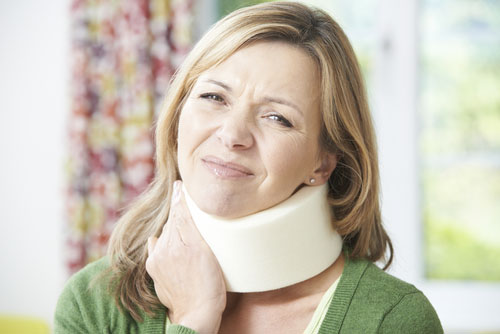
Whiplash injuries can be sustained in any type of crash but occur most often in rear-end collisions. Based on National Automotive Sampling System data, the National Highway Traffic Safety Administration (NHTSA) estimated that there were 805,581 whiplash injuries occurring annually between 1988 and 1996. Of these injuries, NHTSA estimated that 272,464 occurred as a result of a rear impact. A 1999 Institute study found that 26 percent of drivers of rear-struck vehicles reported neck injuries to their insurance company. This was about the same as the 24 percent neck injury rate reported in a 1972 Institute study. Estimates of neck injury rates in other studies have ranged from 7 to 37 percent, depending on whether police or motorists reported the information.
SHOULDER PAIN – INFORMATION FOR PATIENTS THROUGHOUT THE NEWARK, NEW JERSEY AREA
The shoulder is the most flexible joint in the human body, but it is also one of the most fragile. The shallow ball and socket joint of the shoulder allows for an amazing range of rotation, and it is held together in a complex formation of muscles, tendons, bones and ligaments. In a trauma situation, such as an auto, slip and fall or work related accident; these structures are extremely vulnerable to injury. Shoulder injuries can be painful and frustrating when they prevent us from performing daily functions. Common shoulder accident injuries include:
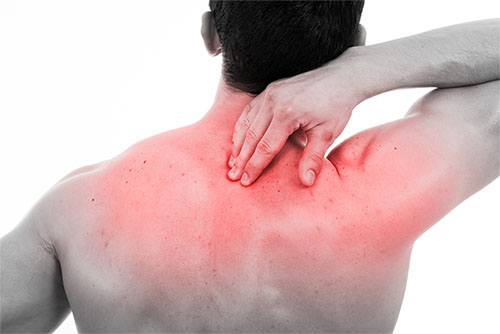
> Auto
The rotator cuff can be injured when a driver is hit from behind while their hands are pressed firmly on the steering wheel or from impact trauma. The rotator cuff refers to the group of muscles and tendons that stabilize the shoulder. They act as support to the shoulder bones (humerus, scapula, and clavicle) and allow the arm to move and rotate freely, as well as keeping the shoulder in place Broken bones and nerve impingement are common injuries in an auto accident. The seat belt restraining either the left or right shoulder can result in anterior dislocation.
> Slip and Fall
A shoulder injury can occur from a slip and fall when someone lands on an outstretched arm, resulting in fractures, dislocation, muscle and ligament tears or inflammation. Nerve damage from other areas such as the back or neck can radiate out to the shoulder, causing pain, discomfort and loss of mobility.
> Workers Comp
Stress from repetitive tasks, such as pushing or pulling heavy objects can put strain on the shoulder and lead to damage. A worker who loads heavy boxes onto a truck may experience shoulder pain from this repeated motion. Repetitive stress injuries that impact the shoulder can also result from an un-ergonomic workstation. Poor posture while working can lead to muscular imbalance in the shoulders, tendonitis in the rotator cuff, or inflammation between the fluid cushions of the rotator cuff and the shoulder bones (bursitis).
> Sports
Shoulder injuries are very common among athletes, due to either repetitive stress, or to some type of trauma. The rotator cuff is particularly prone to injuries; such as tears or inflammation. Shoulder instability or dislocation may also occur, where the humeral head (the “ball”) moves out of the glenoid (the “socket”). Other sport related shoulder injuries include impingement, Superior Labrum from Anterior to Posterior (SLAP) tears, or Ulnar Collateral Ligament (UCL) tears.
Shoulder injuries are often complex, involving both bones and soft tissues. The effects of an accident on the shoulder may not be immediately apparent either, as nerve damage and soreness can show up days, weeks, or even months later. Insurance companies are notorious for denying shoulder injury claims, saying that the condition was already present or wasn’t caused by the accident. Suburban Orthopaedic Medical Center has chiropractors and other medical professionals that specialize in diagnosing and treating shoulder injuries. Not only are our health professionals able to evaluate the complex soft tissue damage that can the shoulder can sustain in an accident, they are able to clearly document these injuries and show that they are a direct result of an accident. This is extremely important information needed for litigation and insurance claims. Suburban Orthopedic Medical Center has worked with thousands of accident victims nationwide, helping them recover from shoulder accident injuries.
Rotator Cuff Injuries
The part of the shoulder most commonly injured is the rotator cuff. Since we rely on our shoulders for so many things day to day, it can be very frustrating when the rotator cuff suffers an injury. The rotator cuff refers to the group of muscles and tendons that stabilize the shoulder. They act as support to the shoulder bones (humerus, scapula, and clavicle) and allow the arm to move and rotate freely, as well as keeping the shoulder in its ball and socket joint.
With a rotator cuff injury, daily tasks such as lifting grocery bags, driving, or even sleeping can suddenly become painful chores that affect your quality of life. Without a healthy rotator cuff, it can be difficult do the things you want to do, such as play sports or exercise. It can also be very painful when reaching over head or extending your arms to drive your car with a damaged rotator cuff. Shoulder injuries can be very serious, but luckily they can be healed if the proper measures are taken as soon as possible.
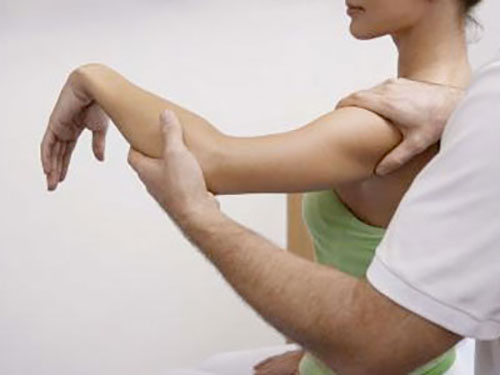
There are several different ways that the rotator cuff can be damaged. Tendinitis occurs when the tendons become inflamed. Bursitis occurs when fluid filled sacs called bursas between the tendons and the shoulder joints suffer irritation and inflammation. Over time, inflammation and can cause the tendons to weaken and become susceptible to tears. Muscles and tendons of the rotator cuff can also tear from extreme exertion or overuse. Some common causes of rotator cuff injuries are.
> Aging
As we age, our ability to heal and regenerate slows down, and thus the delicate tendons of the rotator cuff become prone to injury.
> Poor posture
Slouching your neck and shoulders can weaken your rotator cuff by pinching muscles and tendons under bones. Stress from tight neck and back muscles also impact the rotator cuff and can cause injury.
> Falling
Breaking a fall with an outstretched arm can cause the tendons and muscles of the rotator cuff to bruise and tear.
> Physical exertion
Physical exertion from pulling, pushing, or lifting objects can damage the rotator cuff. This commonly occurs in weight lifters who have weak stabilizing muscles and tendons in the shoulders that cannot handle the weight that their larger muscle groups can.
> Repetitive stress
Repetitive movements or positions can cause stress and inflammation on the rotator cuff. This can be from swinging a baseball bat, using a computer mouse, or painting a wall.
If left untreated, rotator cuff injuries can irritate nerves and cause permanent damage to your shoulder. The rotator cuff is a delicate area, so you don’t want to let just anyone to manipulate it. If you feel any pain or discomfort, you should seek out a chiropractor or medical professional who understands how to treat these complex types of injuries. Suburban Orthopaedic Medical Center’s specialists have helped countless patients recover from rotator cuff injuries. They know exactly how to treat and document these injuries, and will help you get back to doing the things you want to do without worrying about shoulder pain.
